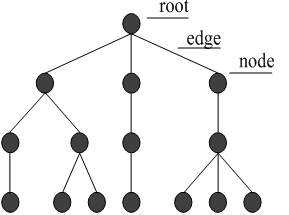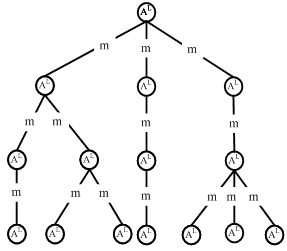-
Paper Information
- Paper Submission
-
Journal Information
- About This Journal
- Editorial Board
- Current Issue
- Archive
- Author Guidelines
- Contact Us
Advances in Computing
p-ISSN: 2163-2944 e-ISSN: 2163-2979
2012; 2(1): 1-5
doi:10.5923/j.ac.20120201.01
Monitoring and Management of Natural Territorial Complexes
Dr. Ghazi H. Shakah1, Victor Krasnoproshin2, Aleksandr Valvachev3
1Dean of the Faculty of Computer and Information Technology, Ajloun National University, Jordan
2Dept. Information Management Systems, Belarusian State University, Minsk, Belarus
3Dept. of Information Management Systems, Belarusian State University, Minsk, Belarus
Correspondence to: Dr. Ghazi H. Shakah, Dean of the Faculty of Computer and Information Technology, Ajloun National University, Jordan.
| Email: |  |
Copyright © 2012 Scientific & Academic Publishing. All Rights Reserved.
The paper describes the use of organization and graph theory for constructing model that management distributed nature and artificial beings. It’s proposed a virtual model of the organization, focused on the implementation of monitoring, regardless of the size and remoteness of the objects of observation from the center. The algorithm of its construction, based on the representation of the model in the form of attributed tree, is described. The resulting virtual model can be considered as a basis for solving a number of applications for monitoring, including decision-making, knowledge acquisition, visualization of large structures, the construction of dynamic digital maps, integration with other systems, etc.
Keywords: Environmental Monitoring, Distributed Organizations, Attributive Tree
Cite this paper: Dr. Ghazi H. Shakah, Victor Krasnoproshin, Aleksandr Valvachev, Monitoring and Management of Natural Territorial Complexes, Advances in Computing, Vol. 2 No. 1, 2012, pp. 1-5. doi: 10.5923/j.ac.20120201.01.
Article Outline
1. Introduction
- Rapid changes in the environment, caused by climate change and globalization, have led to a number of large-scale economic, social and environmental problems. One of them is a rapid change in ecology of natural-territorial complexes. As a result, there are difficulties in agriculture, disappearance of many species of animals and plants, deterioration of health and quality of life in whole[1,2].Under natural-territorial complexes (NTC) can be understood any selected area in some respects, including natural and artificial objects that are observed and evaluated. For a quick and adequate response to changes in NTC have to learn how to fix the changes quickly, to obtain relevant information, to assess the situation quickly and take appropriate decisions. Unfortunately, technology intended for this are just being created, so it is still impossible to estimate the real man-made disasters, including the largest in the history disaster in the Chernobyl NPP. A similar situation is emerging after the accident at the NPP in Japan.Traditionally, monitoring of NTC is performed in the framework of environmental monitoring. Environmental monitoring is a comprehensive system of observation of the state of environment, assessment and forecast of environmental changes caused by natural and anthropogenic factors. Depending on the scale of observation they distinguish local, regional and global monitoring[3].Organizational structure, implementing monitoring (MSO), includes: a regional station for the initial monitoring, the base station, which aggregates information from regions to the national center. These national centers are part of inter-state environmental organizations.The most important tasks of monitoring are:1) a rational distribution of network of monitoring stations across the globe;2) provision with a system of devices and methods of operational control of environmental quality;3) creation of a clear hierarchical system of data collection, storage, transmission, processing and generalization of information on regional, national and global levels[1,3].Creating of MSO for solving these problems is complex, multistage and expensive problem, exacerbated by an increase in the scale of the observed NTC.Changing of boundaries and climatic changes have led to the need to reorganize the existing NTC and to create new NTC, comprising several countries (such as the nature reserve Bialowezhskaja Pushia, which is located on the territory of Belarus and Poland.). As a result, a problem of building of more efficient and less expensive MSO has become urgent[2,4].This rather complex organizational and technological problem includes a number of scientific and technical problems. One of them is to build a model for rapid building of MSO and information exchange among its participants regardless of their geographic location. This paper describes a possible variant of its decision on the basis of a synthesis of elements of organization theory and graph theory.
2. Statement of the Problem
- This problem statement initially is technological in nature. Let there be a NTC (W). Monitoring of NTC should be implemented by the organization (S), which includes a set of geographically distributed regional stations. State of NTC is characterized by a final set of diagnostic indicators (X).It’s required to develop a model of organizational structure (S) for monitoring NTC (W), which provides:- formation of the participants of the monitoring;- local identification of the staff in the administrative hierarchy;- global identification of the staff in the Internet infrastructure.- access of the center to cognitive resources;- grouping and mapping of the structure of OSM in the graphics applications of various purposes, including geographical maps.The main requirement for the solution: possibility to implement on standard personal IBM computers running with the OS Windows.
3. Main Definitions
- To solve this problem is proposed:- to consider the organization as a virtual structure composed of distributed objects, presented as a set of attributes;- to introduce a concept of mobile mediator, providing information exchange between participants in a virtual organization in the global communications infrastructure.The concept of virtuality means that the structure will be constructed in computer memory on base of the actual hierarchical structure (S), and the attributes of the structure will describe the actual characteristics of (S), including industrial, social, official and etc.Formally, we represent the model of the virtual structure as a tuple:
 | (1) |
 | (2) |
 | (3) |
 | (4) |
4. Model of Virtual MSO
- For practical use of models (1) - (4) it’s necessary to choose a way of their presentation in a more "technological" form. For this propose it’s proposed to use graph theory as it is a universal device for the presentation of hierarchies of any kind[4, 5].Graph is a collection of objects (V) and ties between them (E):
 | (5) |
 | Figure 1. MSO structure |
 | Figure 2. MSO representation |
 | Figure 3. Tree skeleton |
 | Figure 4. Attributed tree |
5. Mechanism of MSO Building
- A fast algorithm for constructing the frame of the model is developed. The algorithm is based on the abbreviated notation of the graph and the use of attributes from the previously created database.The use of the notation and databases ensures automatic generation of the tree and a quick attribution of nodes. Manual steps:- to investigate the actual structure of MSO;- to build a relevant sketch of graph model of virtual model;- to perform the packaging on base of the sketch (for example, by Prufer or Gupta methods) and to get a shorten notation of graph model and formalize it as a string[5].Automated stages:- to read the notation;- to unzip the notation (perform parsing of strings) and construct in memory an empty structure of the tree;- to perform primary AL-attribution;- to consider the attributes AG-, AM -, AF-attribution of the database;- to perform a secondary AG -, AM -, AF-attribution;- to record attributed tree in the database.These algorithms differ from similar algorithms for packing of Prufer and Gupta by simplicity and possibility of automation in the design of sketches in Visio (as VSD-file).The implementation of this algorithm does not exclude the manual labor, but significantly reduces its volume, because all labor-intensive processes of constructing of the skeleton of the tree and the attribution of vertexes are automated.The algorithm allows displaying any hierarchical structure in virtual organization. Use of the notation and databases allows to shape the tree automatically and to make a quick attribution of nodes. AL-, AG-, AM-attributes are used respectively for the visual assessment of the leadership of large organizational structures, global positioning of the structure and the construction of dynamic digital maps for different purposes, and AF-attribute reflects traditional identifiers (address, name, e-signature and other features of the participants of the organization).Virtual model of the organization is actually an environment for solution of a wide range of monitoring tasks, provides an access to remote participants monitoring, information exchange between them and the center.In general, the solution generates an external “information-technological” view on the monitor in addition to the traditional "ecological" view.
6. Information Exchange Mechanism
- A mobile structure is proposed for the organization of information exchange between the center and objects (sub)[9]. The structure includes parametric dialogue, intelligent mediator and delivery system (Figure 5). The intelligence of the mediator is the ability to ask questions, receive, analyze and store the answers.
 | Figure 5. Mediator structure |
 | Figure 6. General scheme for monitoring automation |
7. Conclusions
- We considered problem of constructing an organizational structure for monitoring of NTC. Here are shown the shortcomings of existing organizational models: the rigidity, complexity of construction and high cost.It’s proposed a virtual model of the organization, focused on the implementation of monitoring, regardless of the size and remoteness of the objects of observation from the center. The algorithm of its construction, based on the representation of the model in the form of attributed tree, is described.Use of the abbreviated notation of a graph and import of attributes allowed to automate the mapping of any organizational structure in the virtual model, the attribution provided a flexible description of the object, which is relevant to the semantic of the tasks.The resulting virtual model can be considered as a basis for solving a number of applications for monitoring, including decision-making, knowledge acquisition, visualization of large structures, the construction of dynamic digital maps, integration with other systems, etc.
 Abstract
Abstract Reference
Reference Full-Text PDF
Full-Text PDF Full-text HTML
Full-text HTML